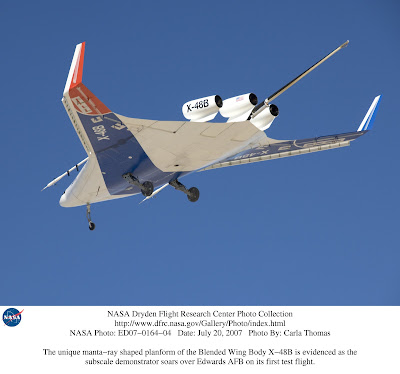
On May 19th, 2005, NASA's Mars Exploration Rover Spirit captured this stunning view as the Sun sank below the rim of Gusev crater on Mars. This Panoramic Camera (Pancam) mosaic was taken around 6:07 in the evening of the rover's 489th martian day, or sol. Spirit was commanded to stay awake briefly after sending that sol's data to the Mars Odyssey orbiter just before sunset.
This small panorama of the western sky was obtained using Pancam's 750-nanometer, 530-nanometer and 430-nanometer color filters. This filter combination allows false color images to be generated that are similar to what a human would see, but with the colors slightly exaggerated. In this image, the bluish glow in the sky above the Sun would be visible to us if we were there, but an artifact of the Pancam's infrared imaging capabilities is that with this filter combination the redness of the sky farther from the sunset is exaggerated compared to the daytime colors of the martian sky. Because Mars is farther from the Sun than the Earth is, the Sun appears only about two-thirds the size that it appears in a sunset seen from the Earth.
The terrain in the foreground is the rock outcrop "Jibsheet", a feature that Spirit has been investigating for several weeks (rover tracks are dimly visible leading up to Jibsheet). The floor of Gusev crater is visible in the distance, and the Sun is setting behind the wall of Gusev some 80 km (50 miles) in the distance.
20071127
foreign sunset
eclipsed to death by
...and you will know us by the trail of dead
@
27.11.07
0
eclipses
![]()
the lights of our nights
eclipsed to death by
...and you will know us by the trail of dead
@
27.11.07
0
eclipses
![]()
tags: moon
20071121
photo session: titan
eclipsed to death by
...and you will know us by the trail of dead
@
21.11.07
0
eclipses
![]()
tags: photo session, saturn, titan
all that dust
The spherical coma of Comet Holmes has swollen to a diameter of over 1.4 million kilometers, making the tenuous, dusty cloud even bigger than the Sun. Scattering sunlight, all that dust and gas came from the comet's remarkably active nucleus, whose diameter before the late October outburst was estimated to be a mere 3.4 kilometers. In this sharp image, recorded on November 14 with the Canada-France-Hawaii Telescope, stars are easily visible right through the outer coma, while the nucleus is buried inside the condensed, bright region. The bright region of the coma seems offset from the center, consistent with the idea that a large fragment drifted away from the nucleus and disintegrated, producing the comet's spectacular outburst. Of course, more recent images of Holmes also show the bright star Mirfak (Alpha Persei) shining through as the comet sweeps slowly through the constellation Perseus.
(+)
eclipsed to death by
...and you will know us by the trail of dead
@
21.11.07
0
eclipses
![]()
20071117
king leonid

According to predictions, the famous Leonid meteor shower will peak this weekend.
The best viewing is predicted to be during the wee hours before dawn on Sunday, when you might see as many as 10 to 15 meteors per hour. But meteor showers are notorious for defying predictions, so don’t discount Saturday and Monday mornings. And don’t be too surprised if the Leonids surpass or fall shy of the predictions.
Even though the first quarter moon will light the evening sky, moonlight shouldn’t bother this year’s Leonid meteor display. As a general rule, the fast-flying Leonid meteors don’t pick up steam until after midnight, and by then the moon will have set. Frequently, the greatest numbers of meteors in any annual shower rain down shortly before dawn.
The Leonid meteors are named for the constellation Leo the Lion. If you trace the paths of these meteors backward, they appear to radiate from Leo. But you don’t have to know Leo to enjoy the Leonids. It’s like in a baseball game when fly balls go every which way through the air, but all come from the vicinity of home plate.
In the case of the Leonids, these meteors streak outward to all parts of the sky from Leo the Lion’s golden mane. And remember, after midnight, you’ll see more.
So, that’s this weekend – the Leonid meteor shower.
(+)
eclipsed to death by
...and you will know us by the trail of dead
@
17.11.07
0
eclipses
![]()
tags: meteor
20071113
a new member

Boeing Phantom Works has partnered with NASA and the Air Force Research Laboratory to study the structural, aerodynamic and operational advantages of the Blended Wing Body concept, a cross between a conventional plane and a flying wing design. The Air Force has designated the prototype the X-48B based on its interest in the design's potential as a multi-role, long-range, high-capacity military transport aircraft. The X-48B Blended Wing Body technology demonstration aircraft was built by Cranfield Aerospace in the United Kingdom to Boeing's specifications. The subscale prototypes have a wingspan of 20.4 feet, with prominent vertical fins and rudders at the wingtips and elevons along the trailing edges of the wings. Three small model aircraft turbojet engines, providing a maximum combined thrust of about 160 lbs, power the 523-lb. gross weight aircraft. The X-48B has an estimated top airspeed of 118 knots (138 mph), a maximum altitude of about 10,000 feet and a flight duration of about 40 minutes.
The X-48B Blended Wing Body technology demonstration aircraft was built by Cranfield Aerospace in the United Kingdom to Boeing's specifications. The subscale prototypes have a wingspan of 20.4 feet, with prominent vertical fins and rudders at the wingtips and elevons along the trailing edges of the wings. Three small model aircraft turbojet engines, providing a maximum combined thrust of about 160 lbs, power the 523-lb. gross weight aircraft. The X-48B has an estimated top airspeed of 118 knots (138 mph), a maximum altitude of about 10,000 feet and a flight duration of about 40 minutes.
eclipsed to death by
...and you will know us by the trail of dead
@
13.11.07
0
eclipses
![]()
20071112
lights of the south

Aurora australis (Sep 11, 2005) as captured by NASA's IMAGE satellite, digitally overlaid onto the Blue Marble composite image. More information and images at wikipedia.org
eclipsed to death by
...and you will know us by the trail of dead
@
12.11.07
0
eclipses
![]()
tags: aurora borealis, earth
20071106
homeworld II
The two crews spent the morning preparing for Discovery's undocking from the International Space Station. At 10:32 UTC, the orbiter successfully backed away from the Pressurized Mating Adapter on the Destiny Laboratory, and pilot Zamka began the fly-around to allow the shuttle crew to photograph the new configuration of the station. After performing the final separation burn, focused inspection began, to scan the wing leading edges and nose cap, the final analysis that allows the ground team to clear the orbiter for re-entry on Wednesday.
eclipsed to death by
...and you will know us by the trail of dead
@
6.11.07
0
eclipses
![]()
tags: space, spacecraft
scared sun
 click on the image for better detail
click on the image for better detail
eclipsed to death by
...and you will know us by the trail of dead
@
6.11.07
0
eclipses
![]()
ying and yang moon
eclipsed to death by
...and you will know us by the trail of dead
@
6.11.07
0
eclipses
![]()
tags: moon
our newest "neighbour"
 Credit & Copyright: Vicent Peris and José Luis Lamadrid (astrofoto.es)
Credit & Copyright: Vicent Peris and José Luis Lamadrid (astrofoto.es) Comet Holmes underwent an unexpected and dramatic increase in brightness starting only two weeks ago. The detail visible in Comet Holmes' tail indicates that the explosion of dust and gas that created this dramatic brightness increase is in an ongoing and complex event. Comet Holmes will move only slightly on the sky over during the next month.

credit & copyright: spielgelteam
eclipsed to death by
...and you will know us by the trail of dead
@
6.11.07
0
eclipses
![]()









